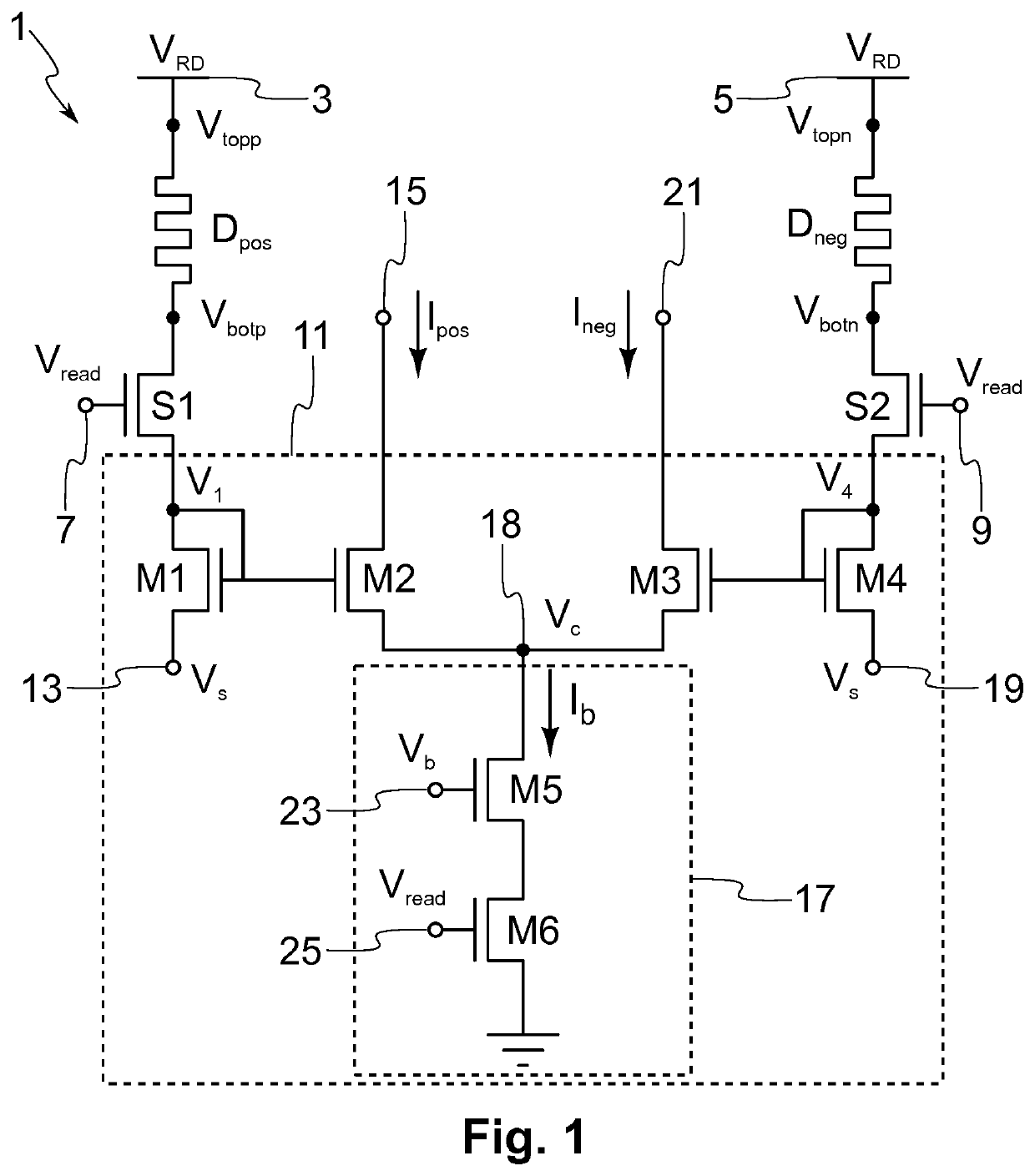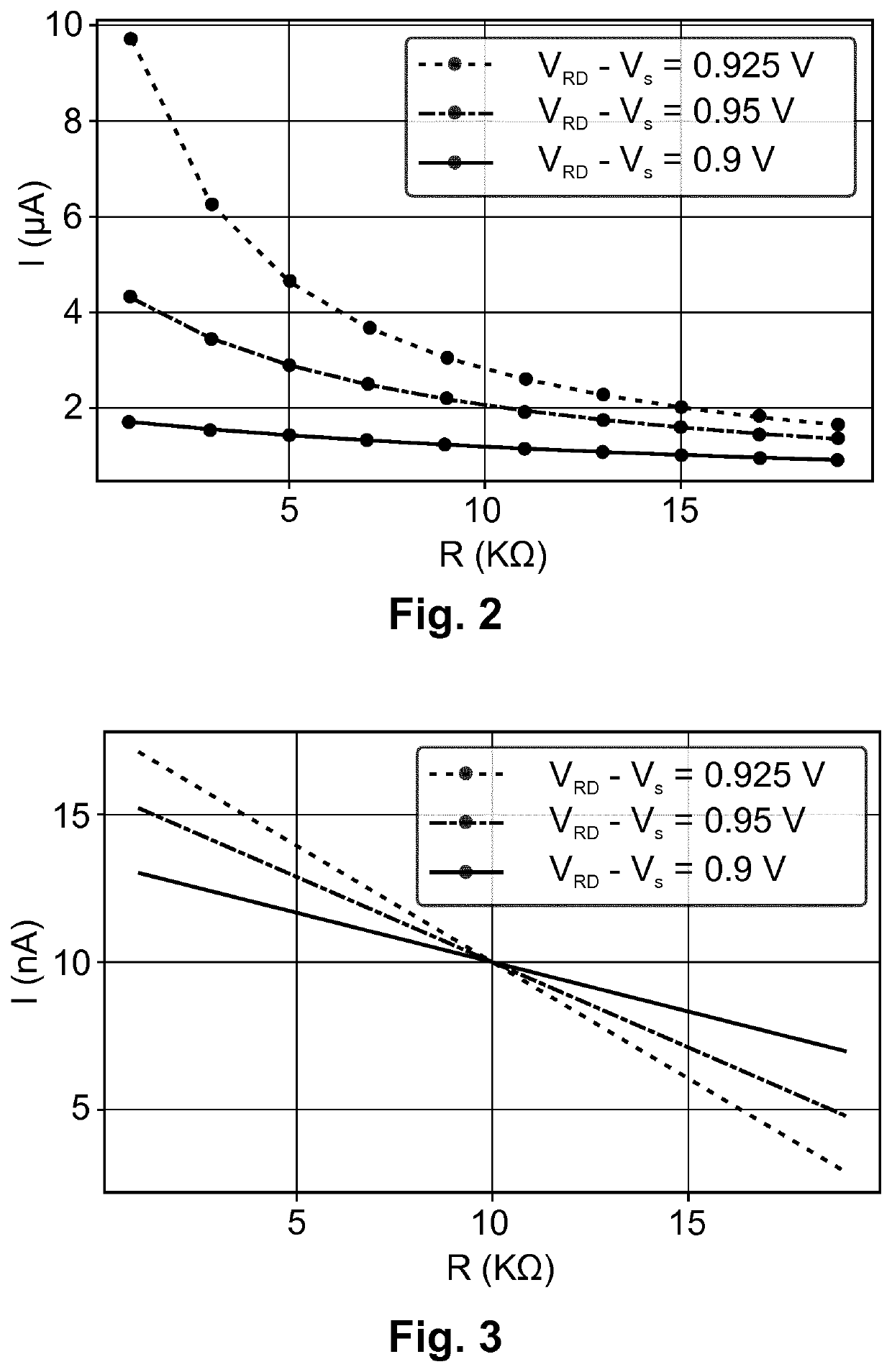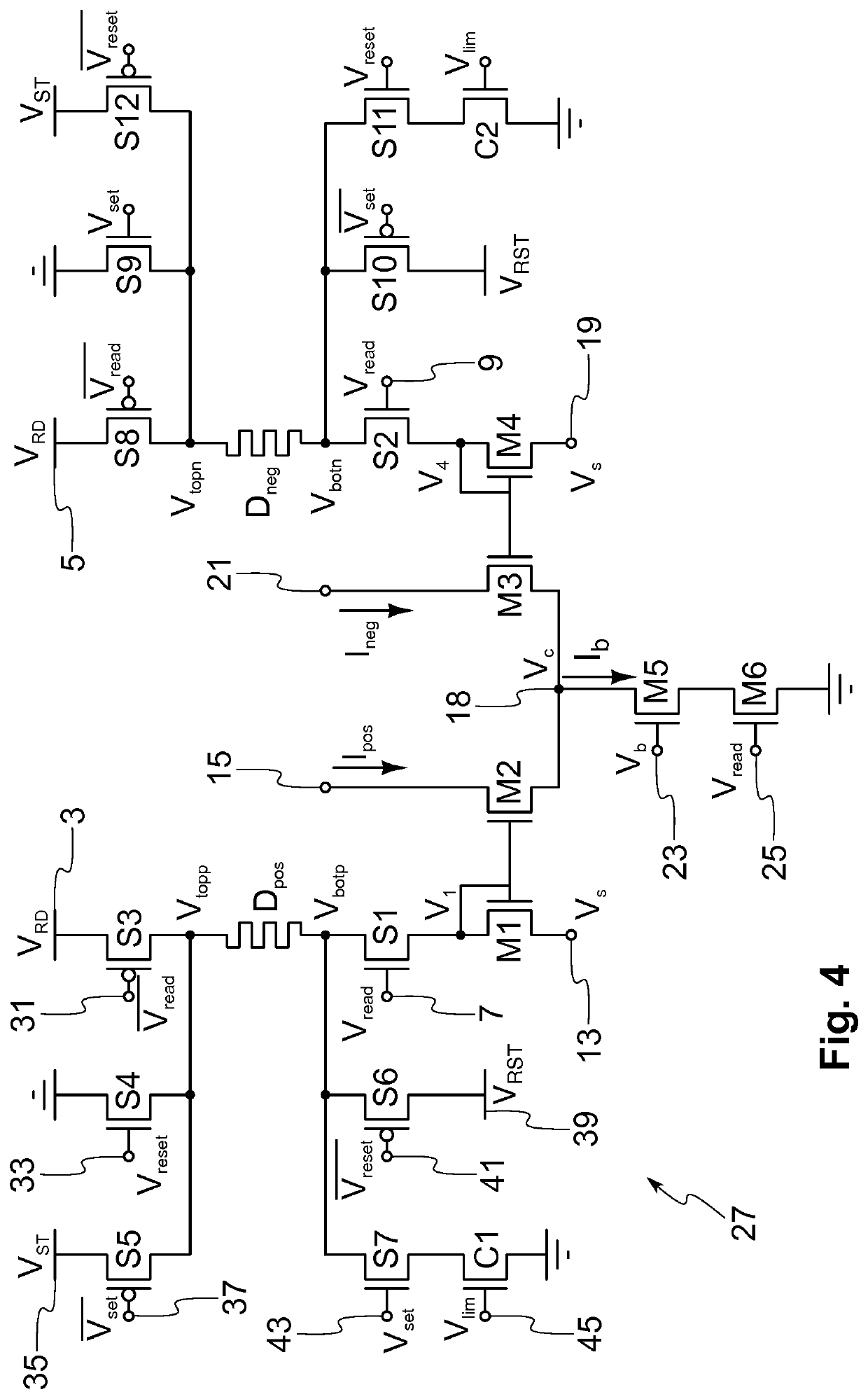Differential memristive circuit
- Summary
- Abstract
- Description
- Claims
- Application Information
AI Technical Summary
Benefits of technology
Problems solved by technology
Method used
Image
Examples
Embodiment Construction
[0023]An embodiment of the present invention will now be described in detail with reference to the attached figures. Identical or corresponding functional and structural elements which appear in different drawings are assigned the same reference numerals.
[0024]The example embodiment of the present invention relates to a differential current-mode memristive circuit for measuring, sensing or reading the conductance (or resistance) of the memristive devices of the circuit, and for producing a scalable output current that is proportional to the sensed device conductances. In the present description, by a differential circuit is understood a circuit in which critical signals are represented by the difference or by another mathematical relationship of two signals rather than a single signal. Furthermore, because the circuit of the present embodiment is a current-mode circuit, these signals are currents. The proposed circuit can use one memristive device as a memory element and another one...
PUM
 Login to View More
Login to View More Abstract
Description
Claims
Application Information
 Login to View More
Login to View More - R&D
- Intellectual Property
- Life Sciences
- Materials
- Tech Scout
- Unparalleled Data Quality
- Higher Quality Content
- 60% Fewer Hallucinations
Browse by: Latest US Patents, China's latest patents, Technical Efficacy Thesaurus, Application Domain, Technology Topic, Popular Technical Reports.
© 2025 PatSnap. All rights reserved.Legal|Privacy policy|Modern Slavery Act Transparency Statement|Sitemap|About US| Contact US: help@patsnap.com



